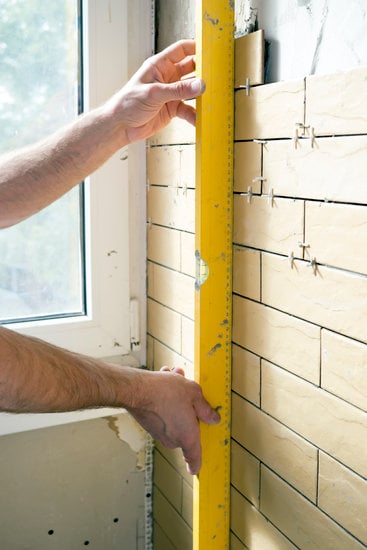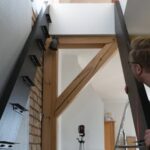Is your old home suffering from low water pressure? If so, you are not alone. Many homeowners struggle with inadequate water pressure, especially in older properties. In this article, we will explore how to improve water pressure in an old home. We will discuss the importance of good water pressure and the common causes of low water pressure that you should be aware of.
Low water pressure can significantly impact your daily tasks and overall comfort in your home. From taking showers to washing dishes and doing laundry, having proper water pressure is essential for a smooth and efficient household. Unfortunately, older homes are more prone to experiencing low water pressure due to various factors such as outdated plumbing systems and fixtures.
In this section, we will delve into the signs that indicate your old home may have low water pressure and how to identify the problem. Additionally, we will cover the common causes of low water pressure that homeowners should be mindful of when addressing this issue. Stay tuned to learn more about improving the water pressure in your old home.
Assessing the Problem
Low water pressure in an old home can be a frustrating issue that affects everyday tasks like showering, washing dishes, and doing laundry. It is important to understand if your home has low water pressure and to look out for common signs that indicate this problem.
One of the most obvious signs of low water pressure is weak or inconsistent water flow from faucets or showerheads. If you notice that the water stream is not as strong as it used to be, there may be an underlying issue with water pressure.
Another way to identify low water pressure in an old home is by conducting a simple test using a pressure gauge. This gauge can be attached to an outdoor spigot and will measure the water pressure coming into your home. The recommended range for normal water pressure is between 40-80 psi (pounds per square inch). If your gauge indicates a lower reading, it may be a sign of low water pressure.
Additionally, paying attention to the time it takes to fill up a sink or bathtub can also help in identifying low water pressure. If you notice that it takes longer than usual for these fixtures to fill up, there may be an issue with water pressure in your home. Understanding these common signs and conducting simple tests can help you determine if your old home has low water pressure.
In addition, paying attention to how well appliances that require water operate will provide additional clues whether you have poor performing pipes. Replacing older worn out piping can result in great improvement throughout your entire household’s plumbing system operations.
getAddressing any leaks found inside or on outside property grounds are invaluable actions towrad preventing any future pipe fractures which could cause serious damage inside household walls due frequent minimal stresses encountered during periods of nominal daily use such as taking showers or flushing toilet below their related flaws mentioned above_.
Checking for Leaks
One of the common reasons for low water pressure in an old home is the presence of leaks in the plumbing system. Leaks can not only lead to wastage of water but also result in reduced water pressure throughout the house. It is important to regularly check for leaks and promptly address any issues to improve water pressure.
Visual Inspection
Start by visually inspecting the exposed pipes in areas such as basements, crawl spaces, and under sinks. Look for signs of corrosion, rust, or moisture, as these are indications of possible leaks. Additionally, check for any visible dripping or pooling water around pipe joints and fixtures.
Pressure Testing
Another effective method for detecting leaks is by conducting a pressure test on the plumbing system. This involves shutting off all water sources in the house and then monitoring the pressure gauge on the main water supply line. If there is a drop in pressure over a certain period of time, it could signify a leak somewhere in the system.
Professional Assistance
If you suspect that there are hidden leaks within the walls or underground, it may be necessary to enlist the services of a professional plumber who can perform more advanced leak detection methods such as acoustic surveys or thermal imaging. These specialized techniques can pinpoint the exact location of leaks that may be contributing to low water pressure in your old home.
By thoroughly inspecting your plumbing system for leaks and promptly addressing any issues, you can significantly improve water pressure in your old home. Not only will this enhance your overall water usage experience, but it can also prevent potential damage and costly repairs associated with persistent low water pressure.
Upgrading Fixtures
When dealing with low water pressure in an old home, one effective solution is to upgrade the fixtures. Outdated faucets, showerheads, and other fixtures may be contributing to the problem, so making necessary upgrades can significantly improve water pressure. Here are some benefits of upgrading fixtures along with tips and recommendations for doing so:
- Improved Flow Rate: Old fixtures often have a lower flow rate, resulting in poor water pressure. By installing newer models designed for better performance, you can see a noticeable improvement in water flow and pressure.
- Water Conservation: Upgrading to more efficient fixtures not only helps with water pressure but also promotes water conservation. Many modern fixtures are designed to provide good pressure while using less water, ensuring a sustainable solution for your old home.
- Enhanced Functionality: Newer fixtures often come with advanced features that allow for customization of the water stream and spray patterns. This can enhance your overall bathing and washing experience while addressing the low water pressure issue in your old home.
When considering upgrading fixtures to improve water pressure in an old home, it is important to choose the right products that are compatible with your existing plumbing system. Additionally, hiring a professional plumber for installation can ensure proper fitting and functionality.
Overall, upgrading fixtures is a practical and effective way to address low water pressure issues in an old home. By investing in high-quality faucets, showerheads, and other fixtures, you can enjoy better performance and improved water pressure throughout your household.
Maintenance Tips
Maintaining the plumbing system in an old home is crucial for ensuring good water pressure. By following recommended maintenance practices, homeowners can prevent low water pressure and keep their plumbing system in excellent condition. Here are some tips for maintaining the plumbing system in an old home:
- Regular Inspections: Schedule regular inspections of the plumbing system to check for any potential issues that could lead to low water pressure. Look for signs of leaks, corrosion, or mineral buildup in pipes and fixtures.
- Drain Cleaning: Over time, drains can become clogged with debris, grease, and mineral deposits, leading to reduced water pressure. Regularly cleaning and maintaining drains can help improve water flow and prevent blockages.
- Water Heater Maintenance: A poorly maintained water heater can also contribute to low water pressure. Flushing the water heater regularly and checking for any sediment buildup can help maintain proper water pressure throughout the home.
In addition to these maintenance tips, homeowners should also be proactive about addressing any minor plumbing issues before they escalate into larger problems that could affect water pressure.
By following these recommended maintenance practices, homeowners can ensure that their plumbing system remains in good condition and prevent low water pressure in their old home.
Overall, regular maintenance is key to preventing low water pressure in an old home. By staying proactive and addressing any issues promptly, homeowners can enjoy consistently good water pressure throughout their homes.
Adjusting Pressure Regulators
If you’re experiencing low water pressure in your old home, one of the key components to check is the pressure regulator. The pressure regulator controls the flow of water into your home and ensures that it stays at a safe and consistent level. Over time, these regulators can become worn or malfunction, leading to decreased water pressure. Thankfully, there are steps you can take to adjust and optimize pressure regulators to achieve better water pressure in your old home.
To begin, locate your pressure regulator, which is typically found near the main water shut-off valve. Once located, you can adjust the regulator by using a flat head screwdriver to turn the adjustment bolt. Turning the bolt clockwise will increase the water pressure, while turning it counterclockwise will decrease the pressure. It’s important to make small adjustments and test the water pressure each time to ensure you don’t overcorrect.
In addition to adjusting the pressure regulator, it’s also important to consider the overall condition of your plumbing system. If there are any leaks or clogs in the pipes, it can still lead to low water pressure even after adjusting the regulator. Regular maintenance and inspections of your plumbing can help identify and address these issues before they impact your water pressure.
| Step | Description |
|---|---|
| Locate Pressure Regulator | Find where the regulator is located near the main water shut-off valve. |
| Adjustment Process | Use a flat head screwdriver to make small adjustments to increase or decrease water pressure. |
| Consider Overall Plumbing Condition | Regular maintenance and inspections of your plumbing system are essential for identifying other issues that may be contributing to low water pressure. |
Considering a Booster Pump
If you have tried other methods to improve water pressure in your old home and are still experiencing low water pressure, you may want to consider installing a booster pump. A booster pump can help increase water pressure by actively pumping water through the pipes at a higher pressure than what is currently available. This can be especially beneficial in older homes with outdated plumbing systems that struggle to maintain adequate water pressure.
When considering a booster pump for your old home, it is important to explore the potential benefits it can offer. Not only can a booster pump improve the overall water pressure, but it can also provide consistent water flow throughout the home.
This means no more fluctuating water pressure when using different fixtures or appliances at the same time. Additionally, installing a booster pump can lead to improved shower experiences and better functioning faucets, making daily tasks more convenient and enjoyable.
In order to determine if a booster pump is the right solution for your low water pressure issues, it is recommended to consult with a professional plumber. They can assess your current plumbing system, analyze your specific needs, and provide guidance on whether a booster pump is the best course of action.
With their expertise, you can ensure that any decision made about installing a booster pump is well-informed and tailored to address the unique water pressure challenges in your old home.
| Benefit of Booster Pump | Explanation |
|---|---|
| Increased Water Pressure | A booster pump actively pumps water through pipes at higher pressure |
| Consistent Water Flow | Booster pumps provide consistent water flow throughout the home |
| Improved Daily Tasks | Better functioning faucets and improved shower experiences make daily tasks more convenient |
Professional Help
Seeking professional help for resolving low water pressure issues in an old home can be necessary when simple troubleshooting and maintenance measures do not yield significant improvements. Here are some instances when it may be time to enlist the expertise of a professional plumber:
Complex Plumbing System Issues
If the low water pressure in your old home is due to complex plumbing system issues such as corroded pipes, outdated infrastructure, or extensive leaks that are difficult to detect and repair on your own, it is advisable to consult with a professional plumber. They have the knowledge, experience, and tools required to assess and address major plumbing system issues that could be impacting the water pressure in your home.
Regulator Adjustments and Pump Installation
Adjusting pressure regulators and installing booster pumps to improve water pressure in an old home may require specialized skills and expertise. A professional plumber can accurately assess the existing water pressure, make appropriate adjustments to the regulator, or recommend and install a booster pump if necessary. Their assistance can ensure that these tasks are carried out correctly to achieve optimal results without causing any further issues.
Comprehensive Water Pressure Evaluation
When experiencing persistent low water pressure in your old home despite attempting various DIY solutions, a professional plumber can conduct a comprehensive evaluation of your plumbing system. They can identify underlying factors contributing to low water pressure, such as clogged pipes or outdated fixtures, and provide effective solutions tailored to your specific needs.
In these situations, enlisting the help of a professional plumber can save time and provide peace of mind knowing that the low water pressure issues in your old home are being addressed by someone with the expertise needed for more complex plumbing challenges. If you’ve exhausted all other options for improving water pressure on your own, consulting with a professional may be the most efficient way to achieve better water pressure in an old home.
Conclusion
In conclusion, it is important to recognize the significance of good water pressure in an old home and understand the common causes of low water pressure. Identifying if your old home has low water pressure and being aware of common signs to look out for will allow you to take proactive measures to improve the situation.
Inspecting the plumbing system for leaks and considering upgrades to fixtures can significantly enhance water pressure in your home. Additionally, implementing recommended maintenance practices and adjusting pressure regulators can also contribute to better water pressure.
For those who have exhausted DIY options without seeing much improvement, considering the installation of a booster pump may be a viable solution. This option can help increase water pressure in an old home and provide potential benefits for residents. However, when all else fails, seeking professional help is always an option.
In closing, by actively addressing the issue of low water pressure in an old home through these various methods and strategies, homeowners can expect significant improvements in their water system. For those looking for additional resources or assistance on how to improve water pressure in an old home, consulting with reputable plumbing professionals or accessing online guides and forums can provide valuable insights and support.
Frequently Asked Questions
Why Is Water Pressure Low in Old House?
Water pressure in old houses can be low due to various reasons such as corroded pipes, mineral deposits, or outdated plumbing systems. These issues can restrict the flow of water and lead to decreased pressure.
How Do I Increase Water Pressure in My House?
To increase water pressure in your house, you can start by checking for any clogged pipes, faucets, or showerheads. If those are clear, you may consider installing a water pressure booster pump or adjusting the pressure regulator on your main water line.
How Do You Increase the Water Pressure in Your House Well?
If you want to increase the water pressure in your house well, you can start by checking the well pump and pressure tank. Ensure that they are functioning properly and consider adjusting the pressure switch to see if it improves the water pressure. In some cases, upgrading the well pump may be necessary for better pressure.

I’m thrilled to have you here as a part of the Remodeling Top community. This is where my journey as an architect and remodeling enthusiast intersects with your passion for transforming houses into dream homes.





